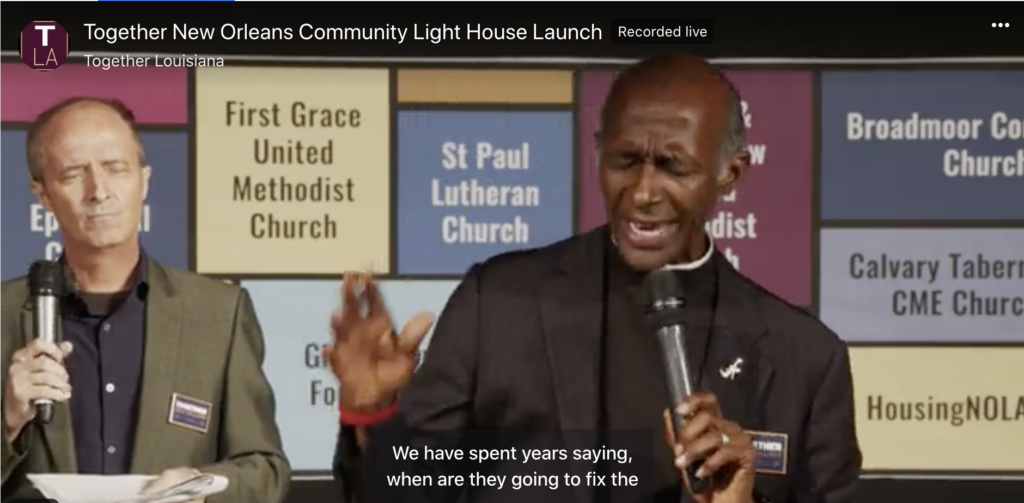
After some time away, here’s how I see the microgrid market now.
I got the chance to immerse myself in microgrids again last week after nearly a year away. The new owners of the site I co-founded, Microgrid Knowledge, kindly welcomed me to the publication’s annual conference, held this year in Baltimore, Maryland.
What struck me immediately was that this market stops for no one. Turn your head for a moment, and a lot happens. Here are 5 concepts and trends worthy of note from the conference stage.
1. Watch for the rise of the living microgrid or “dynagrid”
We have microgrids, nanogrids, minigrids, and now dynagrids, a term used by the Department of Energy’s Gil Bindewald. Dynagrid stands for dynamically configurable microgrids, which represent the merger of microgrids and AI.
Dynagrids are not built based on an artificial construct or boundary. Instead, “they’re able to be almost living,” in terms of their ability to harness resources and meet needs, said Bindewald, a principal deputy assistant secretary at the DOE. Such microgrids ‘understand’ electricity systems as well as the needs of the people they serve. They can self-configure or self-adjust to those dynamics.
It’s not a brand new term. The National Renewable Energy Lab and other researchers have been exploring dynagrid concepts. Will we soon see the term make its way to the commercial sector?
2. Microgrids spring from the grassroots
Have you ever heard of communities, church groups or local organizations banding together and saying, “Hey! Let’s build a big transmission line in our neighborhood!” More likely, they’ve said, “Let’s not.”
But it’s different with microgrids.

Early microgrid advocates saw them as a potential tool for grassroots action on energy, and now it’s happening. Community groups are organizing to build microgrids because they let energy wealth stay local, assure that communities have power during disasters, and allow locals to determine their energy mix. Plus, the federal government is giving grassroots microgrids a big financial boost.
One of my favorite stories from the conference was about the Community Lighthouse project, which is trying to bring microgrid resilience hubs or “community lighthouses” to every neighborhood across Louisiana.
Broderick Bagert of Together Louisiana, a coalition of 250 congregations and citizen organizations, played a video (See 29-minute mark) that offered insight into the movement’s origins. Louisiana was badly hit by Hurricane Ida in 2021 which caused lengthy power outages and criticism of Entergy’s response. That led Rev. Antoine Barriere, pastor of Household of Faith Church in New Orleans, to realize, “We have to stop saying, ‘When are they going to?’ And we have to start saying, ‘How are we going to?’” — a sentiment at the heart of the local energy movement.
The group has installed 10 microgrids so far, many of them at churches of various denominations. Its goal is 500 microgrids, a target that seems doable because of sizable federal support.
The Community Lighthouse project is one to watch. It could be a model for communities nationwide if it works in Louisiana.
3. Still chasing the elusive value of resilience

From the start microgrids have faced a math problem. They provide a service—resilience—that isn’t easily monetized. The value appears to be temporal. After a power outage, businesses and communities value resilience highly. But before the suffering occurs, don’t think much about it.
Despite hours of math crunching to pinpoint a generic Value of R, the industry still lacks a one-size-fits-all formula. That may be because there is no one Value of R.
Cuyahoga County, Ohio, which has launched an innovative microgrid utility, is pursuing “customized resilience,” said Rick Bolton, CEO of Compass Energy Platform, which has contracted to act as the utility operator. Each company or organization that plans to participate in one of the county microgrids undergoes a “resilience audit” that defines their critical load and outage tolerance.
This emerged from the realization that “resilience is not a single thing, nor is it single value,” Bolton said. More than just a measure of product loss, resilience encompasses such things as economic development, which is “just as important to the long-term health of the community as weatherproofing,” he said.
“So when I say customized resilience, I really mean customized resilience. Resilience for the fire department is not the same as resilience for the wastewater treatment plant or the public library or the jail,” he said.
A problem still exists, however. Who will pay for resilience? Those who need it most — vulnerable communities — can afford microgrids the least. The good news is that federal funding is now flowing to struggling communities. “But the DOE money won’t last forever. We’re going to have to rethink microgrid design fundamentally if we’re going to provide resilience for everyone,” he said.
See Think Microgrids Are Too Complicated?
4. Think Microgrid, think states, think local
While it’s great that the federal government is infusing funds into microgrids, it’s ultimately state policy that dictates the viability of energy technologies that are built on the distribution grid.
Over the years, various states have emerged as microgrid champions, including California, New Jersey, New York, Wisconsin, and the New England states. Some programs have been successful; for others, results are mixed.
Now, Maryland is in the spotlight. The Mid-Atlantic state didn’t rush in as a first mover, but watched other states and tried to capture the best of their ideas before it launched its microgrid grant program in 2020.
Maryland has achieved what Ken Horne, director of portfolio operations at Spring Lane Capital, described as “market animation 2.0.” The state has funded a range of microgrid projects, including one of this year’s Microgrid Greater Good Award winners.
What can other states learn from Maryland?
Be flexible and take the time to uncover community needs, said Brandon Bowser, Maryland Energy Administration section chief for clean energy and resilience, and a driving force behind the state program.
Maryland employed an emergency management principle — emergencies are best managed locally — in devising its program, Bowser said.
“The community knows itself better than anybody else. The organization knows itself better than anybody else. They know what they need, they know what they’re looking for. They just need the help and the expertise of the energy industry,” he said.
So Bowser’s advice is: “Find your market first. Know exactly what the demand is, where it’s coming from, and just how far along the general education of society is in your state on microgrids.”
Bowser spoke both on the main stage and at a workshop held by Think Microgrid, an organization that, among other things, produces an annual scorecard to gauge progress on microgrid policy by the states. Think Microgrid’s workshop drew state government representatives from as far away as Hawaii, who took a deep dive into state activity, perhaps setting the stage for the emergence of “market animation 3.0.”
5. How should you treat your utility?

Steve Pullins, chief technology officer of AlphaStruxture, offered a new take on the utility/customer relationship, in a discussion on electric vehicles and the grid, moderated by Adib Naslé, CEO of Xendee, with panelists Joseph Martorano, Arup associate principal and JT Steenkamp, director of projects and technology at Prologis Mobility.
Pullins pointed out that with the rise of energy-hungry data centers, finding grid power for electric vehicle charging stations may become difficult. And even if a utility has power available for a bus depot or airport EV charging, will it be the kind of power required by today’s operations? Will it be resilient and reliable — key requirements in an era when climate change is upon us and the grid is under strain.
Layer on top of that sustainability goals, and the transportation industry is likely to find the utility grid wanting, Pullins said, citing utility integrated resource plans through 2040.
Since transportation is mission critical, fleet owners need to weigh risk factors, including who contributes to its power supply risk and who can mitigate that risk, Pullins said.
So how should fleet owners think about their utility in this changing world?
Pullins does not say they should reject utility power, but he says they should think about it differently—not as the automatic default.
“We tell our customers think about yourself first. The utility is just another resource. So work your own objectives first and then if there’s a way to play nicely with the grid, that’s fine, but think about your objectives first and remember that the grid is just another resource,” Pullins said.
This struck me as a radical departure from how society has conventionally thought about utilities. Utility grids have been the de facto supplier, while distributed energy resources represented a departure from the norm. In Pullins’ worldview, the utility grid and DERs are on equal footing, and the customer chooses.
What’s next in DERs? More change. Once a tortoise, now a greyhound, the electric power industry is on the move. Learn about the opportunities emerging by subscribing to the free Energy Changemakers Newsletter.
